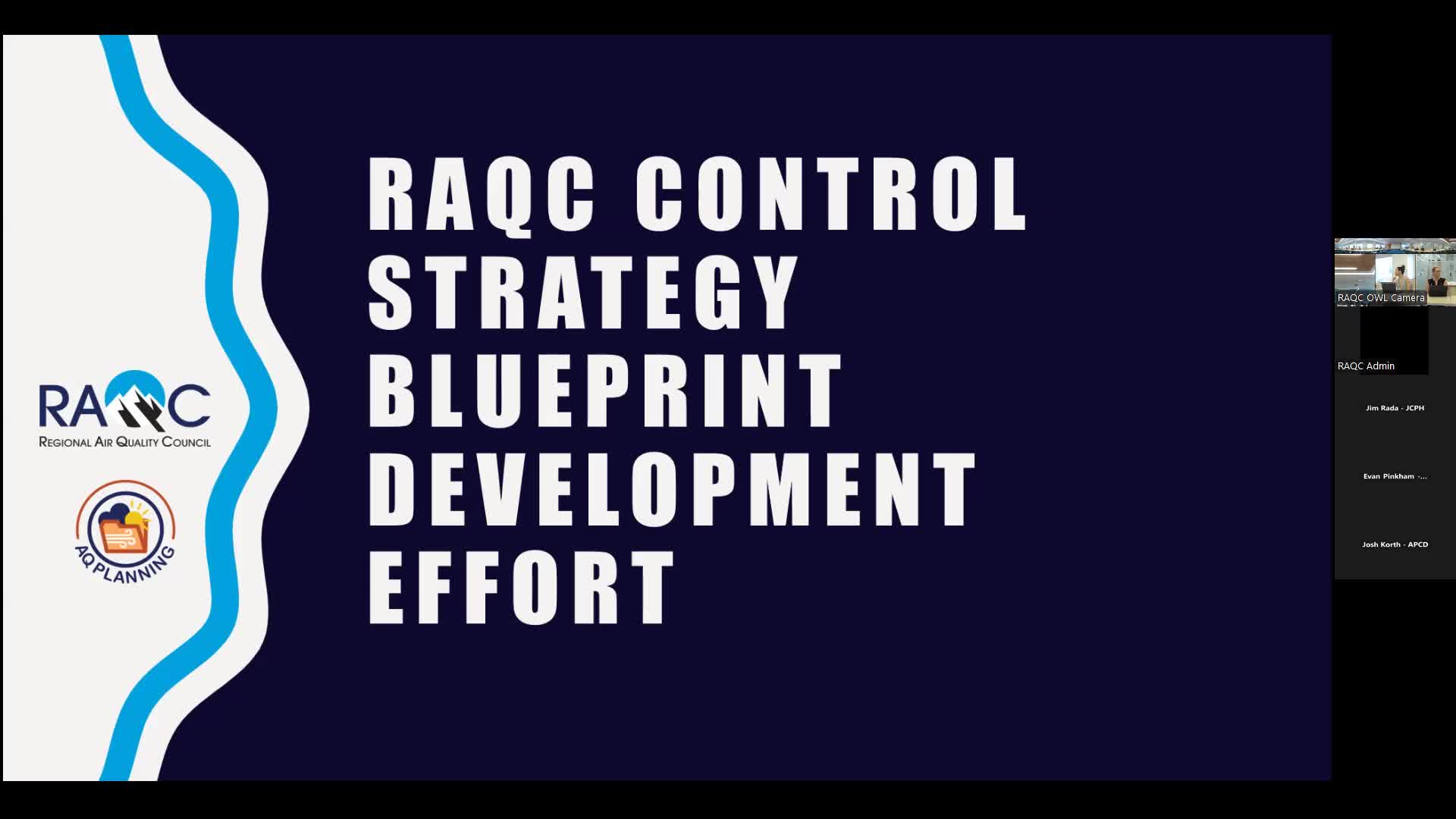Air Quality Board Reviews Ozone Control Strategy Blueprint Ahead of November Deadline
August 01, 2025 | Regional Air Quality Council, Governor's Boards and Commissions, Organizations, Executive, Colorado
This article was created by AI summarizing key points discussed. AI makes mistakes, so for full details and context, please refer to the video of the full meeting. Please report any errors so we can fix them. Report an error »

In a recent meeting held on August 1, 2025, the RAQC Board convened to address critical updates regarding air quality modeling and control strategies in Colorado. The atmosphere was charged with a sense of urgency as board members discussed the importance of refining their modeling tools to ensure accuracy and reliability in air quality assessments.
The conversation began with a focus on the need to correct discrepancies in existing models. One board member emphasized the importance of having a single, accurate version of the data to avoid confusion among stakeholders. "We spend more time explaining than we need to," they noted, highlighting the challenges posed by outdated figures. The board agreed to collaborate with their contractor to rectify these issues, with the contractor voluntarily dedicating time to make the necessary adjustments without additional costs to the state.
As the meeting progressed, the board turned its attention to the Control Strategy Blueprint, a draft document outlining potential policy solutions aimed at improving air quality. While still in its early stages, the blueprint is expected to evolve into a comprehensive framework that could influence future regulatory actions. Board members acknowledged the iterative nature of this process, recognizing the tight deadlines they face in developing effective strategies.
The blueprint will focus on ozone air quality planning, examining historical data and emissions trends to identify effective control strategies. The board aims to achieve measurable reductions in ozone precursor emissions by the 2030-2032 timeframe, aligning with upcoming attainment planning milestones. Members discussed various factors that will guide their evaluation of these strategies, including technological feasibility, cost-benefit analysis, and enforceability.
As the meeting concluded, there was a palpable sense of determination among board members. They expressed gratitude for the hard work of staff and the challenges they face in managing vast amounts of data under pressure. The board is committed to refining their approach and ensuring that the public receives clear and accurate information about air quality initiatives moving forward. With plans to reconvene in September, they are poised to present a more detailed version of the Control Strategy Blueprint, signaling a proactive step towards cleaner air in Colorado.
The conversation began with a focus on the need to correct discrepancies in existing models. One board member emphasized the importance of having a single, accurate version of the data to avoid confusion among stakeholders. "We spend more time explaining than we need to," they noted, highlighting the challenges posed by outdated figures. The board agreed to collaborate with their contractor to rectify these issues, with the contractor voluntarily dedicating time to make the necessary adjustments without additional costs to the state.
As the meeting progressed, the board turned its attention to the Control Strategy Blueprint, a draft document outlining potential policy solutions aimed at improving air quality. While still in its early stages, the blueprint is expected to evolve into a comprehensive framework that could influence future regulatory actions. Board members acknowledged the iterative nature of this process, recognizing the tight deadlines they face in developing effective strategies.
The blueprint will focus on ozone air quality planning, examining historical data and emissions trends to identify effective control strategies. The board aims to achieve measurable reductions in ozone precursor emissions by the 2030-2032 timeframe, aligning with upcoming attainment planning milestones. Members discussed various factors that will guide their evaluation of these strategies, including technological feasibility, cost-benefit analysis, and enforceability.
As the meeting concluded, there was a palpable sense of determination among board members. They expressed gratitude for the hard work of staff and the challenges they face in managing vast amounts of data under pressure. The board is committed to refining their approach and ensuring that the public receives clear and accurate information about air quality initiatives moving forward. With plans to reconvene in September, they are poised to present a more detailed version of the Control Strategy Blueprint, signaling a proactive step towards cleaner air in Colorado.
View full meeting
This article is based on a recent meeting—watch the full video and explore the complete transcript for deeper insights into the discussion.
View full meeting
